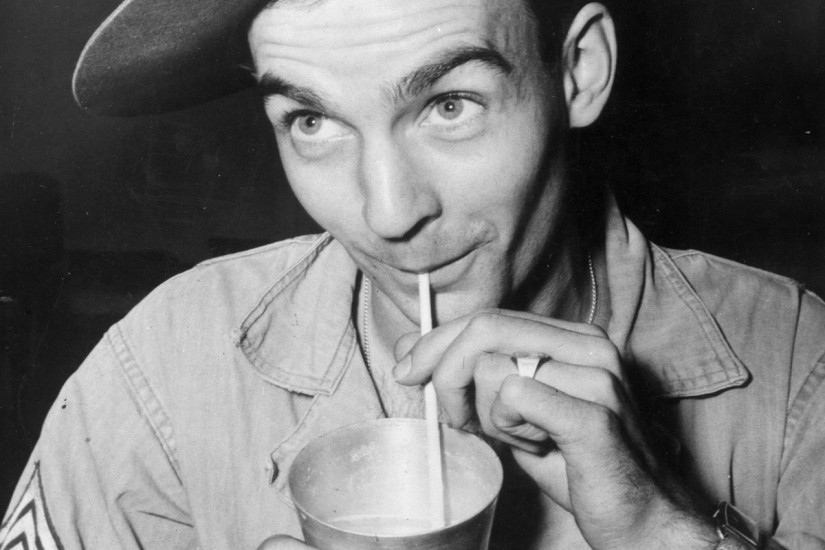In 1944, a Warner Bros. cartoon euphemized World War II through Bugs Bunny and ice cream. Marooned in the Pacific under Japanese attack, Bugs commandeers an ice-cream truck and begins handing out “Good Rumor” bars, which turn out to be chocolate-covered grenades. The bars explode, and Bugs drives off. “Business is booming,” he cracks.
There’s a lot wrong with this infamous cartoon. The dialogue includes racial epithets and the animated Japanese soldiers are depicted as yellow-faced. One thing it does get right, though, is the notion of ice cream “booming” as America’s secret weapon during the war. Ice cream in fact played a significant role in the nation’s wartime efforts—and would be used for support in the military-industrial complex for decades.
Before World War II, the military’s food concerns were largely relegated to ensuring that soldiers consumed enough calories to march (and that civilians and refugees consumed enough to endure). During the First World War, this was the job of Herbert Hoover, the first administrator and wartime consigliere of the U.S. Food Administration. He succeeded on the platform that “food will win the war,” persuading American households to “Hooverize” meals by sacrificing wheat, sugar, meat, and fat (the origin of Meatless Mondays and Wheatless Wednesdays). The result was a rapid tripling of food exports, yielding more than 18 million tons of food staples for the war effort in America’s first full year of war alone.
But the ice-cream industry, still in its infancy, demanded even more for the boys overseas: not just calories, but comfort. An editorial in the May 1918 issue of The Ice Cream Review, a monthly trade magazine, spooned out sharp criticism for the scant availability of ice cream overseas: “If English medical men knew what ours do every hospital would keep ice cream on hand for patients.”
